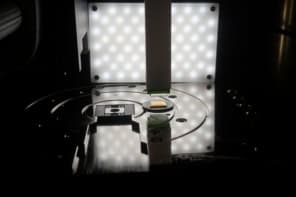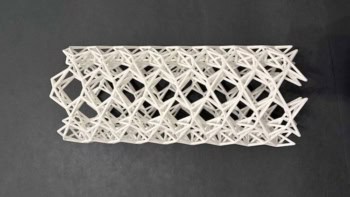The poisonous mercury vapour found inside every fluorescent light could be replaced by xenon, an inert gas, as a result of research at the University of Utrecht in the Netherlands. The mercury atoms in fluorescent lights emit ultraviolet (UV) radiation when they are excited by the electric discharge in the lamp. This UV radiation is then converted into visible radiation by phosphor crystals coated on the inside of the tube. Previous attempts to replace mercury by xenon have failed because the energetic UV radiation produced by xenon lacked a suitable phosphor to convert the UV into visible light. Now Andries Meijerink and colleagues at Utrecht have developed a new phosphor that does this. This material - a crystal of lithium gadolinium fluoride doped with europium - emits two visible photons for every UV photon it absorbs using a new technique known as quantum cutting (Science 283 663).
The technique works because two different ions, gadolinium and europium, are in the phosphor material. The UV light boosts a gadolinium ion to its excited state. This excess energy is then transferred to two europium ions, both of which emit one photon of red visible light as they drop back down to the ground state. Meijerink and colleagues now hope to discover other phosphor compounds that can generate blue or green light so that a mixture of all three colours would produce white fluorescent light.



